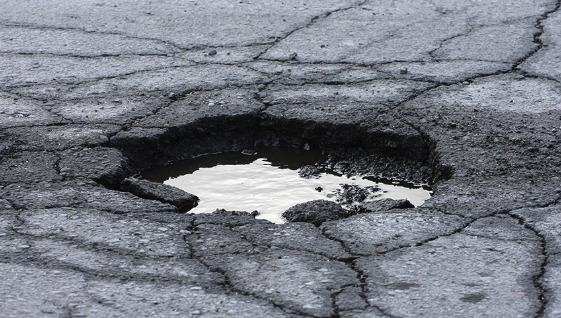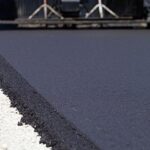Selecting the Ideal Material for Pothole Repair

Potholes, those frustrating craters that appear on roadways and pavements, are a common menace faced by both drivers and pedestrians. These depressions in the road surface are not only unsightly but also pose safety risks and can lead to costly vehicle damage. The process of repairing potholes involves carefully selecting the appropriate material to fill the void, ensuring a seamless and long-lasting solution. In the quest to find the best material for pothole repair, one must weigh factors like durability, cost-effectiveness, ease of application, and environmental impact.
Asphalt Mixes: A Traditional Choice
Asphalt mixes are among the most commonly used materials for pothole repair. These mixes consist of aggregates (such as crushed stone and sand) bound together by a bituminous binder. The repair process involves cleaning out the pothole, heating the asphalt mix, and compacting it into the void. Asphalt’s popularity can be attributed to its compatibility with existing road surfaces, its relatively low cost, and its ability to withstand heavy traffic loads.
Asphalt’s durability, however, can vary based on factors like climate, traffic intensity, and the quality of the mix used. In regions with extreme temperature fluctuations, asphalt repairs may require more frequent touch-ups due to the expansion and contraction of the material. Furthermore, while asphalt offers a satisfactory solution for many pothole repairs, it may not be suitable for every situation, particularly in areas with harsh weather conditions or high traffic volume.
Cold Mix Asphalt: A Versatile Alternative
Cold mix asphalt is an alternative to traditional hot mix asphalt that doesn’t require heating during the application process. It is pre-mixed and can be used in colder temperatures, making it a convenient option for year-round repairs. This material is commonly used for temporary fixes or in areas where hot mix asphalt may not be readily available.
Cold mix asphalt’s advantage lies in its ease of use and application, but its long-term durability can be a concern. It might not withstand heavy traffic loads or extreme weather conditions as well as hot mix asphalt, leading to more frequent repairs. Additionally, while it offers convenience, it may not provide the same long-lasting solution as some other materials.
Pothole Patching Compounds: Innovative Solutions
Pothole patching compounds have gained attention for their innovative approach to pothole repair. These materials often come in bags or containers and are specifically formulated to adhere to the pothole surface, creating a durable bond. Some patching compounds are designed to be used in both cold and warm weather, providing a versatile solution.
Patching compounds can provide excellent durability and resistance to various weather conditions. However, they might come with a higher initial cost compared to traditional asphalt mixes. The convenience of these compounds might outweigh the higher price for some applications, as they can reduce the need for frequent repairs and offer enhanced performance.
Concrete Mixes: A Sturdy Choice
Concrete is another material that can be used for pothole repair, especially in areas with heavy traffic loads or where asphalt may not hold up well. Concrete offers exceptional durability and can withstand the wear and tear caused by high traffic volume. The application process involves cleaning the pothole, preparing a concrete mix, pouring it into the void, and allowing it to set.
While concrete is durable, its use as a pothole repair material comes with some challenges. The preparation and application process can be more labor-intensive than some other options. Additionally, concrete repairs might not blend seamlessly with existing asphalt surfaces, creating aesthetic discrepancies.
Geosynthetic Materials: Reinforcing and Preventing
Geosynthetic materials, such as geotextiles and geogrids, are sometimes used in combination with traditional repair materials to reinforce pothole repairs or prevent their formation. These materials provide additional stability and strength to the repaired area, helping to mitigate future damage.
While geosynthetic materials can enhance the overall performance of pothole repairs, they are often used in conjunction with other materials rather than as standalone solutions. Their primary role is reinforcement rather than filling, and they might not be suitable for every repair scenario.
Conclusion: Finding the Right Balance
The quest for the best material to fill potholes is a complex endeavor that requires striking a balance between durability, cost-effectiveness, ease of application, and environmental considerations. Different materials have their advantages and disadvantages, making the choice dependent on specific factors such as the climate, traffic intensity, budget constraints, and the desired longevity of the repair.
While asphalt mixes remain a popular and cost-effective choice, newer materials like pothole patching compounds and geosynthetic reinforcements offer innovative solutions with enhanced durability. Cold mix asphalt provides versatility in colder temperatures, while concrete can be a sturdy alternative in high-traffic areas.
Ultimately, the best material for pothole repair will depend on the unique circumstances of each situation. Careful assessment of factors like the repair site’s conditions, expected traffic load, budget, and available resources is essential to make an informed decision. Regardless of the chosen material, timely and effective pothole repair is crucial to ensure the safety of road users, prevent further damage, and maintain the integrity of our transportation infrastructure.
Contact us
 Phone Call |
 Text Message |
 |







